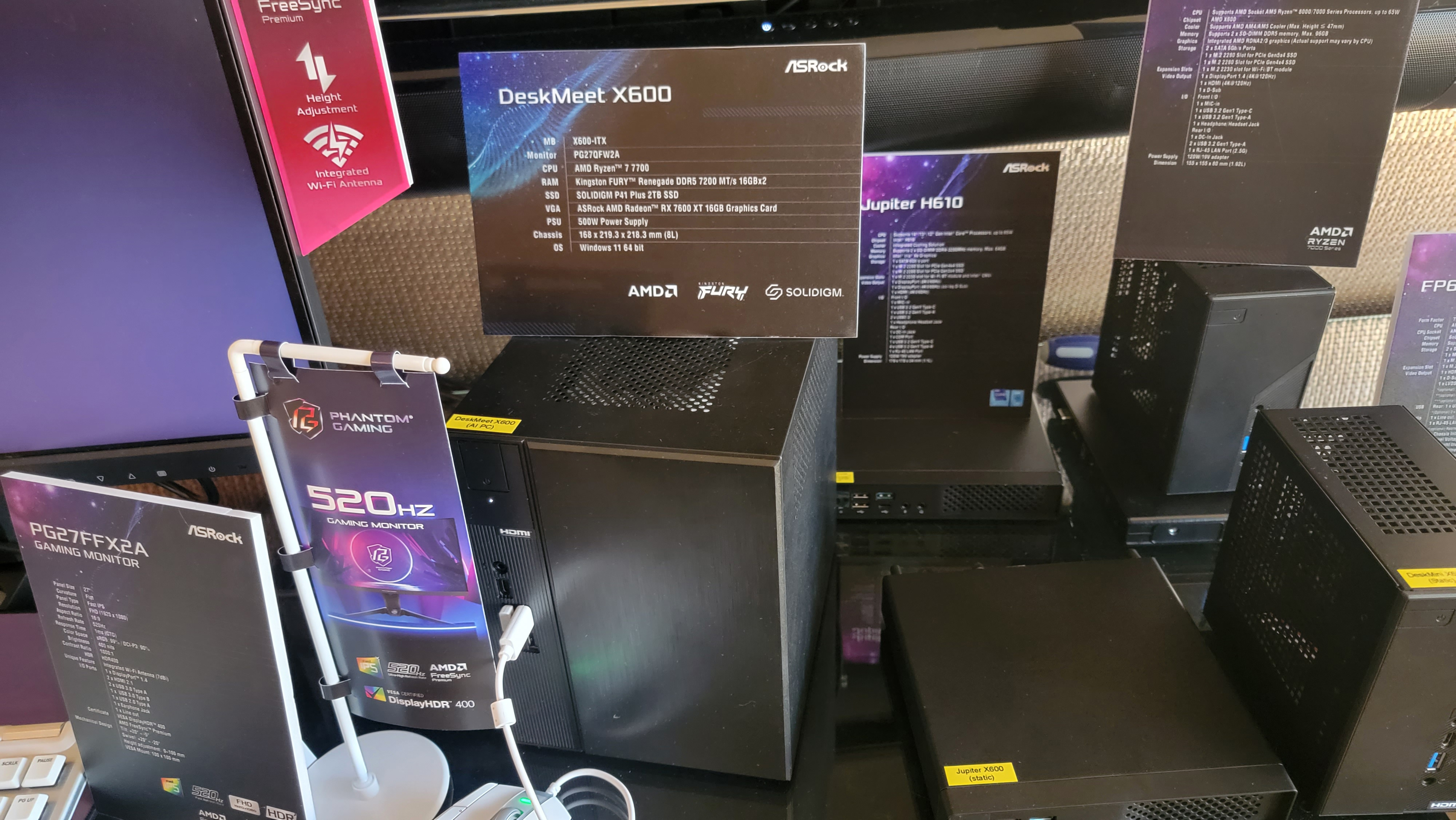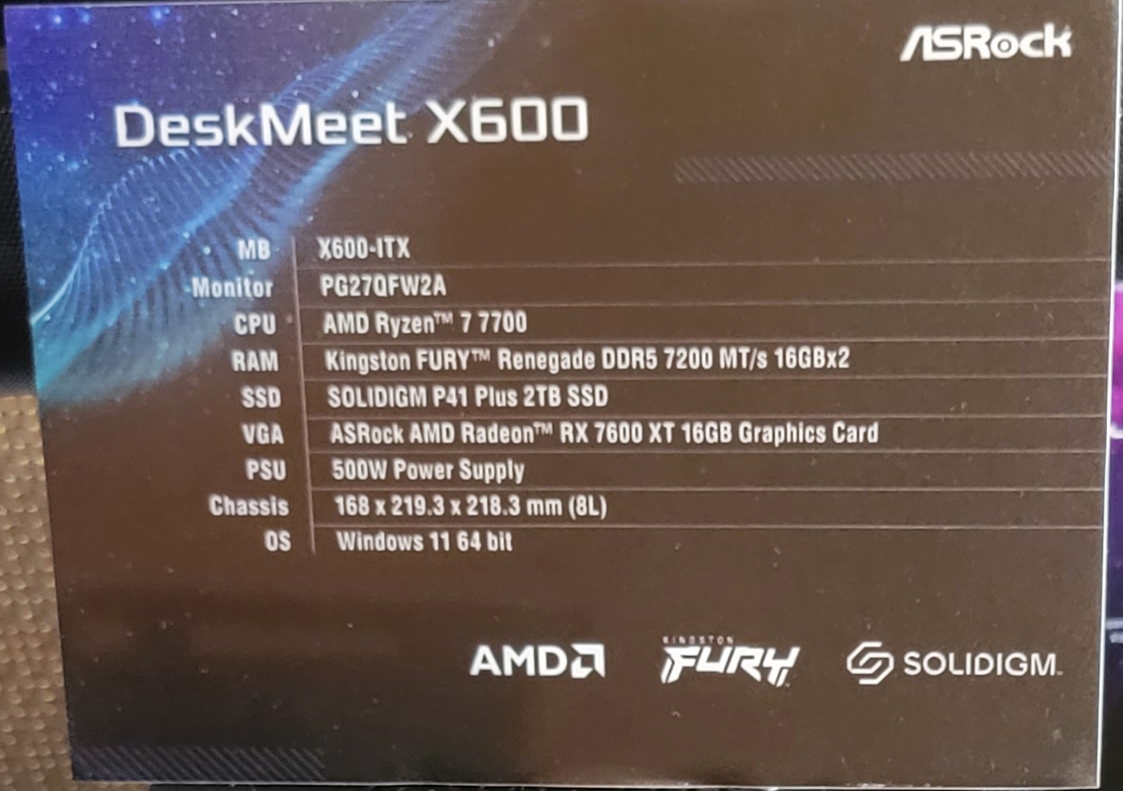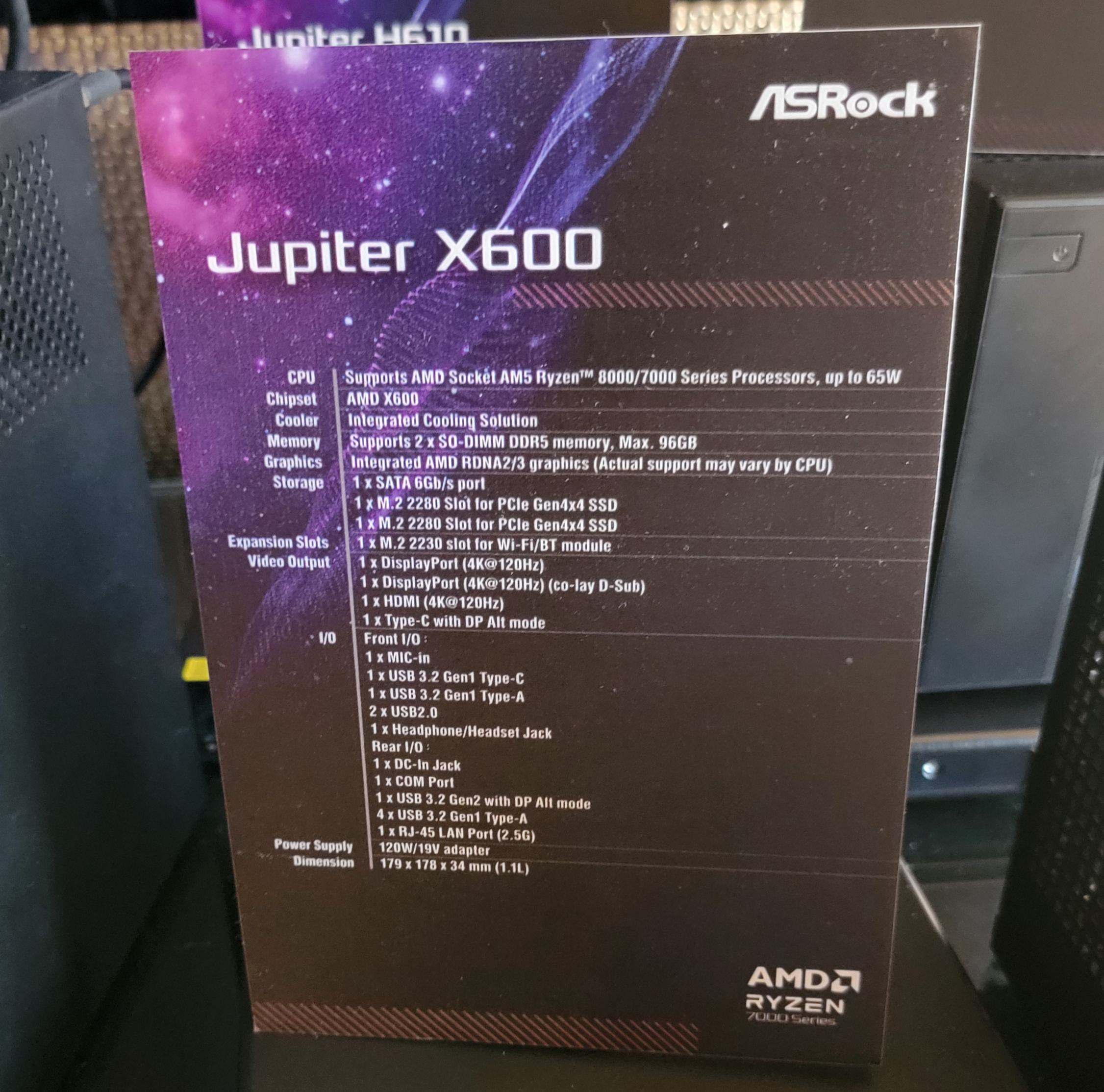ASRock launches new mini-PCs for AMD's latest Ryzen CPUs — DeskMeet, DeskMini, and Jupiter arrive with X600 chipset and USB4 support
ASRock mini-PCs upgraded to the AM5 socket

As AMD is getting ready to launch its Zen 4-based Ryzen 8000G processors with decent integrated graphics, its partners are gearing up to introduce their compact desktops supporting Ryzen 7000 and 8000-series processors. ASRock is undoubtedly one of them, with DeskMeet X600 and DeskMini X600 systems showcased at CES. Both machines use AMD's unannounced X600 chipset and support USB4.
Both DeskMeet X600 (8 liters), DeskMini X600 (1.92 liters), and Jupiter X600 (1.0 liters) support AMD's Ryzen 7000 and Ryzen 8000G-series processors with up to 65W thermal design power. The larger DeskMeet X600 features a PCIe x16 slot for graphics cards as well as four slots for DDR5 memory modules, whereas the smaller DeskMini X600 and Jupiter X600 do not have a slot for discrete graphics boards and are equipped with two slots for DDR5 SODIMMs.
A version of the DeskMeet X600 that ASRock demonstrated at CES packed AMD's Ryzen 7 7700 and latest Radeon RX 7600 XT graphics card, though actual configurations may vary.



There are two intriguing things about these systems. Firstly, all three machines are said to be based on AMD's unannounced X600 chipset, and we can only wonder about its differences from the A620, the company's entry-level AM5 platform. Secondly, ASRock representatives at the trade show implied that the company's DeskMeet X600, DeskMini X600, and Jupiter X600 will support USB4, even though product descriptions do not reflect this capability for now (probably due to lack of formal certification, but we are speculating here).


Although both the DeskMeet X600, DeskMini X600, and Jupiter X600 are positioned as mainstream compact desktops, all three can pack capable hardware. For example, the DeskMini X600 has two M.2 2280 slots for SSDs featuring a PCIe 5.0 x4 and PCIe 4.0 x4 interface and an M.2 2230 slot for a Wi-Fi + Bluetooth module.
The DeskMini X600 machine also has a 2.5 GbE port, four display outputs (DisplayPort, HDMI, D-Sub, USB-C), a combination of USB Type-A and USB Type-C connectors, and an audio jack for headsets. Meanwhile, the Jupiter X600 does not have a D-Sub but has a COM port.
ASRock says its DeskMeet X600 should be available shortly, so expect it to arrive in the coming weeks. Meanwhile, the DeskMini X600 and Jupiter X600 will hit the market later, probably after AMD launches its Ryzen 8000G APUs with built-in RDNA 3-based graphics.
Get Tom's Hardware's best news and in-depth reviews, straight to your inbox.

Anton Shilov is a contributing writer at Tom’s Hardware. Over the past couple of decades, he has covered everything from CPUs and GPUs to supercomputers and from modern process technologies and latest fab tools to high-tech industry trends.
- Paul AlcornEditor-in-Chief
-
abufrejoval I'm sick and tired of 2.5 Gbit Ethernet when NBase-T including 5 and 10 Gbit/s has been around for a decade and TB3/USB4 ports (without any NICs to connect to) reach 40Gbit/sReply
There are chips from Aquantia/Marvel that can't cost an arm and a leg, so why not put them in? -
javiindo New AMD platform it's for high computing and gaming. These cases are for light tasks and non gaming. To make it worse, 8300 CPU it's for OEM only.Reply -
domih Replyabufrejoval said:I'm sick and tired of 2.5 Gbit Ethernet when NBase-T including 5 and 10 Gbit/s has been around for a decade and TB3/USB4 ports (without any NICs to connect to) reach 40Gbit/s
There are chips from Aquantia/Marvel that can't cost an arm and a leg, so why not put them in?
"They" will milk the 2.5 GbE market as much as possible. Then "they" will re-iterate with 5 GbE, then with 10 GbE.
Using used hardware from large corporations and data centers easily found on eBay, you can jump directly to ~45 GbE for costs similar to new consumer 10 GbE RJ-45 (NICs and switches). I did so 5 years ago at my SOHO. Ideal for moving large (dozens plus gigabytes) files such as VM images, databases, ProxMox VE, etc. You just need to do your home work to learn about the technologies that data centers are replacing, e.g. IP over IB with Mellanox 56Gbps on eBay.
There is plenty of community support information on user forums about enterprise network hardware.
Given that leading edge data centers are now at 400 GbE and 800 GbE, one can hope to find lost cost used 100 GbE hardware on eBay in a few years. Once you reach this kind of network speed you need PC workstations with enough power and internal bus speeds to actually leverage the network bandwidth.
Not useful to the typical gamer user profile tough.